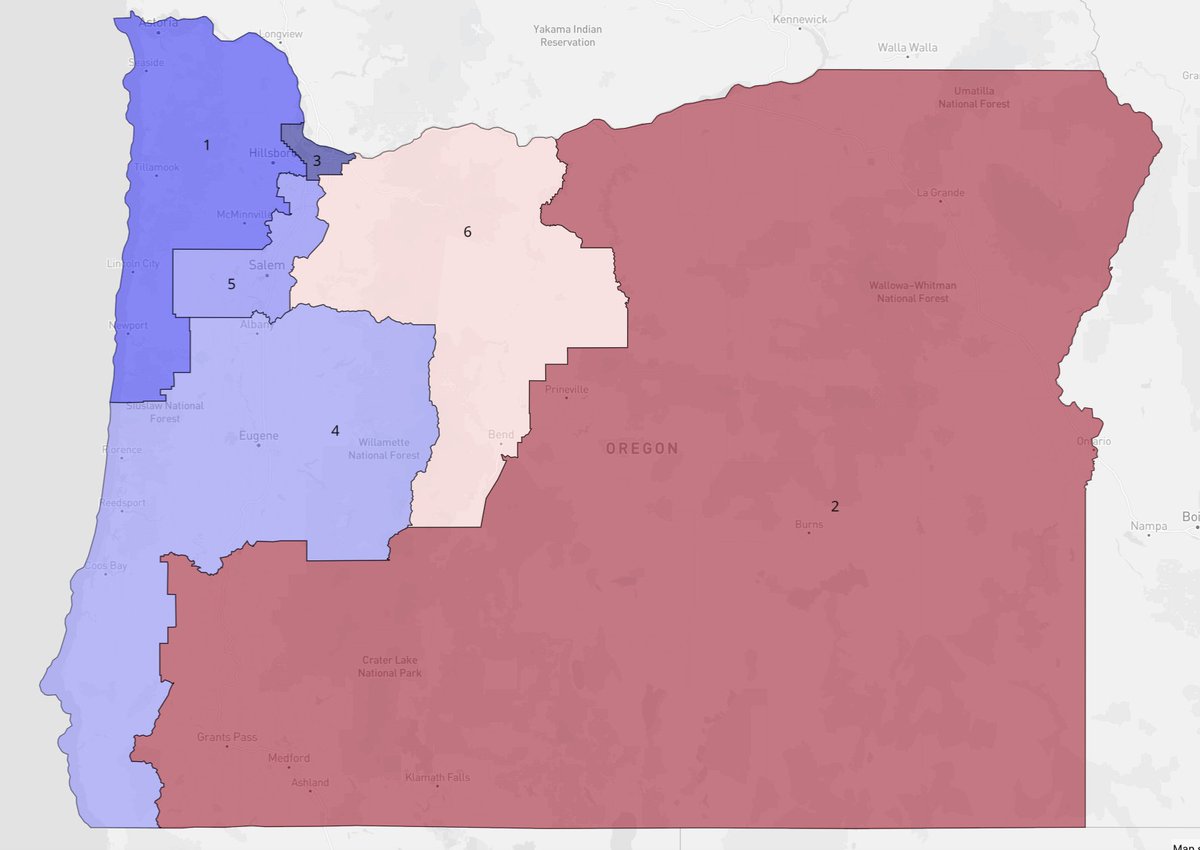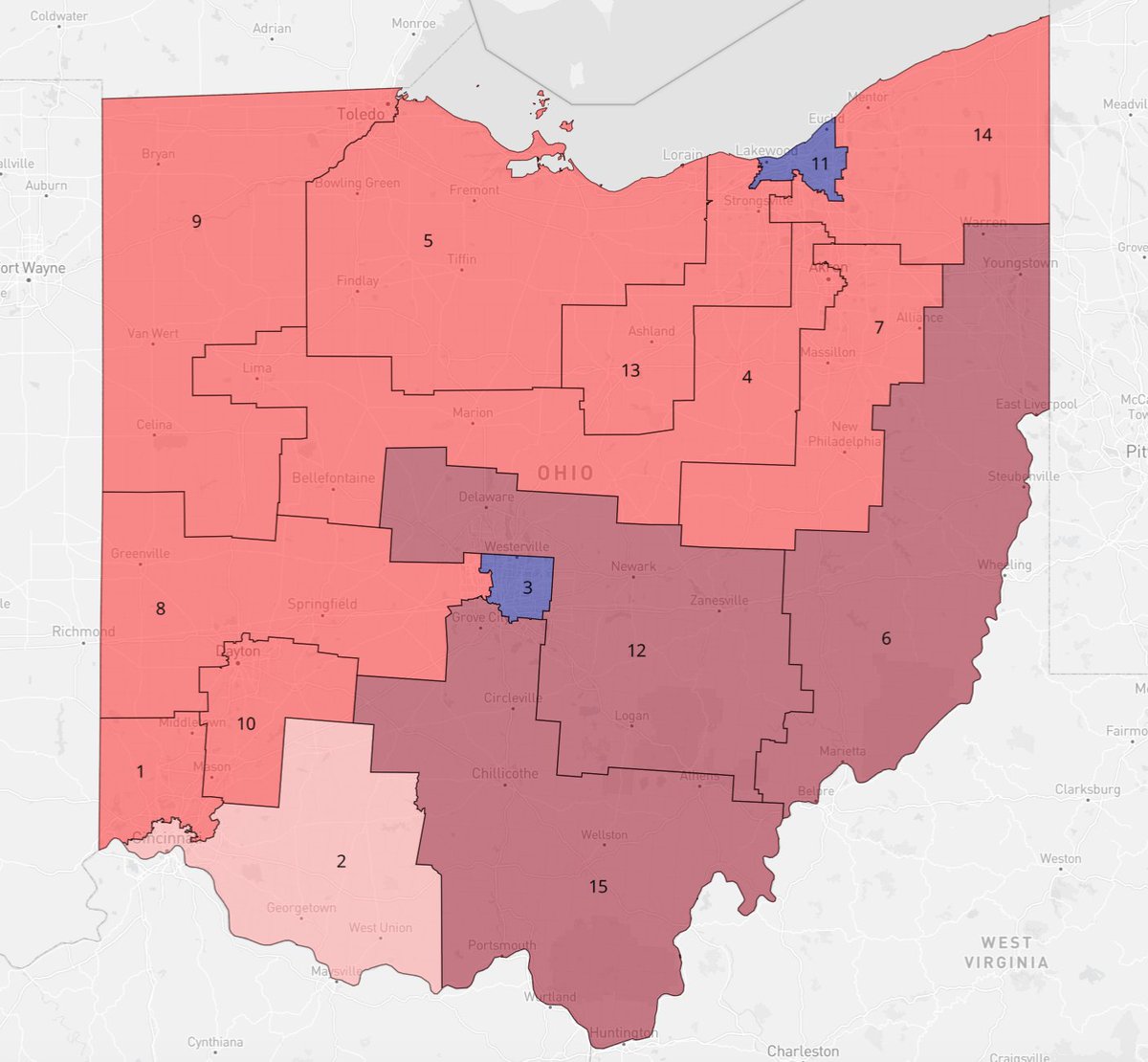
OREGON: is gaining a sixth district in 2022, which means all five current districts below will need to shed 117k+ residents to make way for #OR06. A quick thread... 

Dems have held a 4-1 seat lead since 1996, and control the redistricting trifecta. But, they also have a geography problem: Oregon's Dems are so clustered in Portland that if you were to draw a map based on compactness alone (below), Rs might have a shot at winning 3/6 seats. 

In addition, Oregon has a rare tradition of bipartisan cooperation on maps. Earlier this year, Speaker Tina Kotek (D) struck a deal to give Rs equal power on the state house redistricting committee, though many Ds insist they can still ultimately pass a map w/o GOP support.
Per sources, the prevailing Dem thinking is that the new #OR06 should be awarded to the fastest-growing areas of the state: perhaps in the triangle of Bend (which has seen explosive growth and flipped from Trump '16 to Biden '20), the Portland suburbs and Salem.
In addition, Dems badly want to shore up #OR04 and #OR05, which nearly voted for Trump in '16, in the event Reps. Peter DeFazio (D) and/or Kurt Schrader (D) leave in the next decade or face a pro-GOP election cycle.
This raises the prospect of a deal: in the map below, DeFazio (D) & Schrader (D) would both get shored up by a few points and the new #OR06 would be a "fair fight" district straddling the Cascades (in this version, it would've been Trump +1 in '16 and Biden +7 in '20). 

For our full analysis of Oregon (and every other state), be sure to subscribe to @CookPolitical. cookpolitical.com/subscribe/why-… 

• • •
Missing some Tweet in this thread? You can try to
force a refresh















